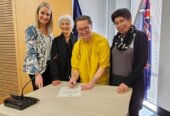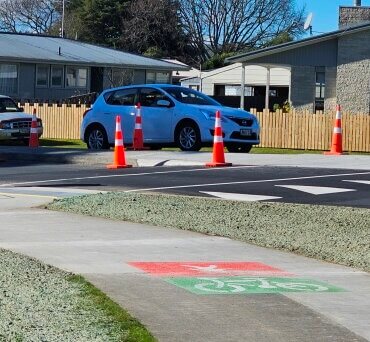
The mats for the new crossing in Shakespeare Street go in today. Photo: Mary Anne Gill
13 July 2pm
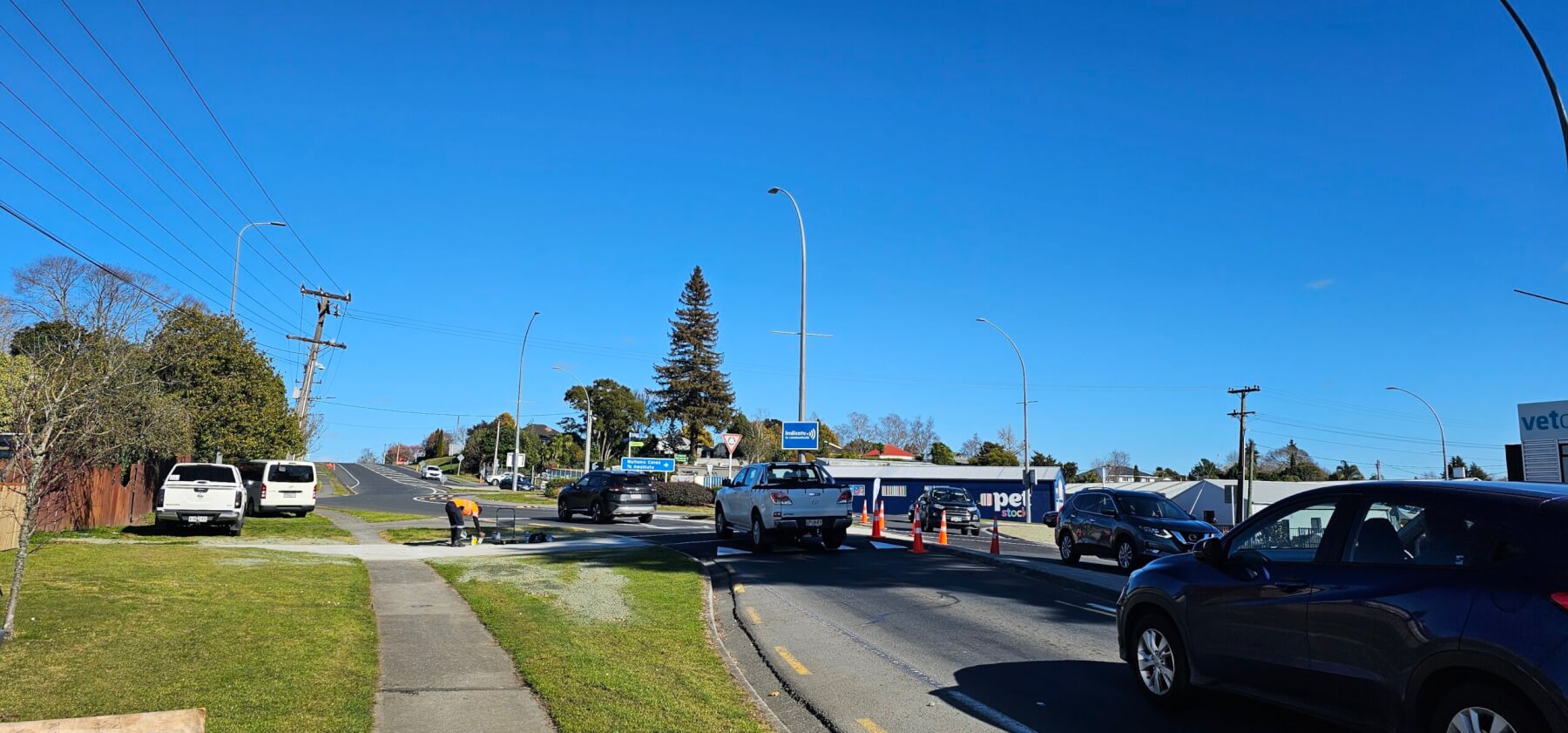
Contractors place mats on the new pedestrian crossing. Photo: Mary Anne Gill.
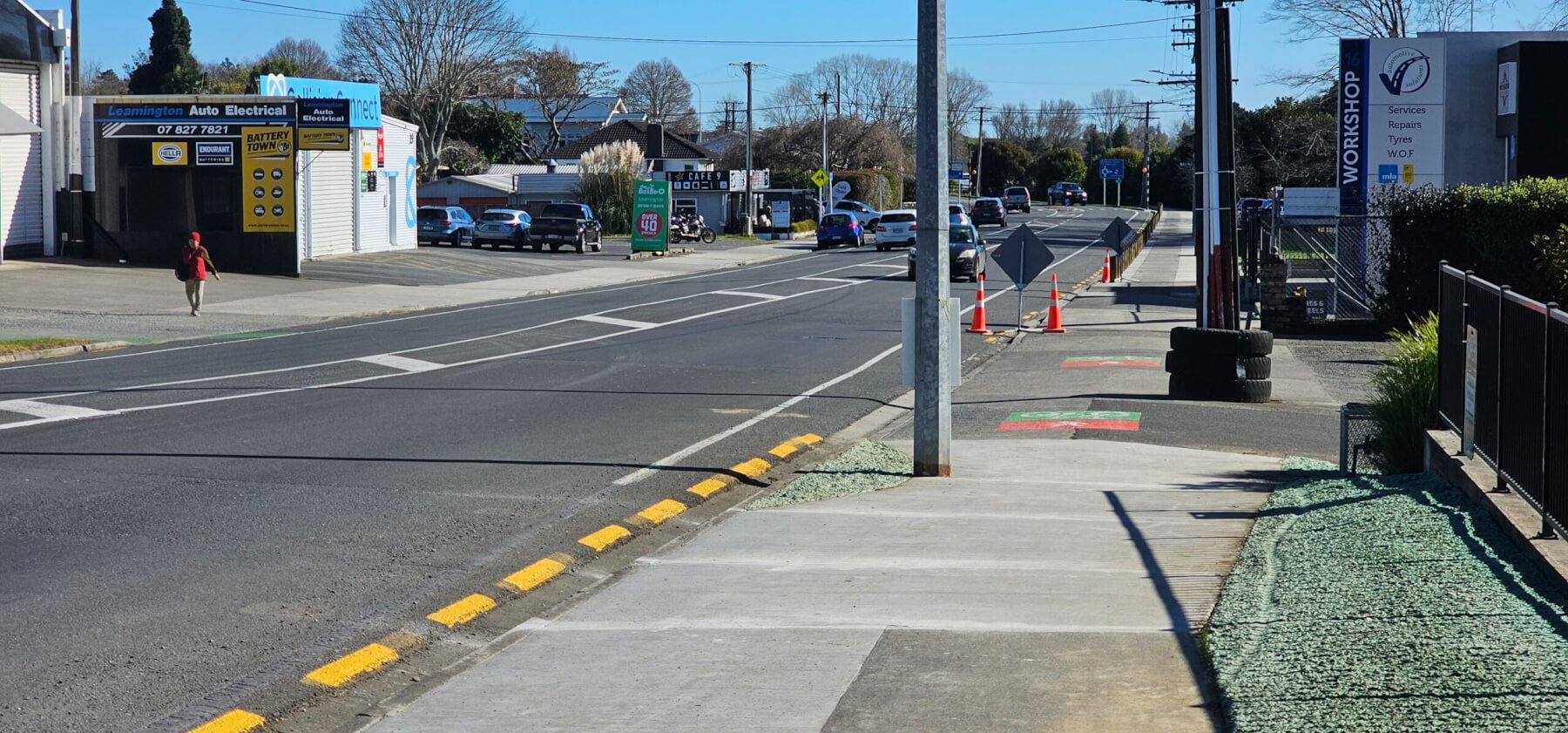
The widened shared path in Cook Street. Photo: Mary Anne Gill.
*Changed copy below to a new pedestrian crossing in Shakespeare Street, not Cook Street.
11 July 5am
An innovative solution to slow traffic at a major roundabout so pedestrians and cyclists can cross the road safely is copping plenty of criticism.
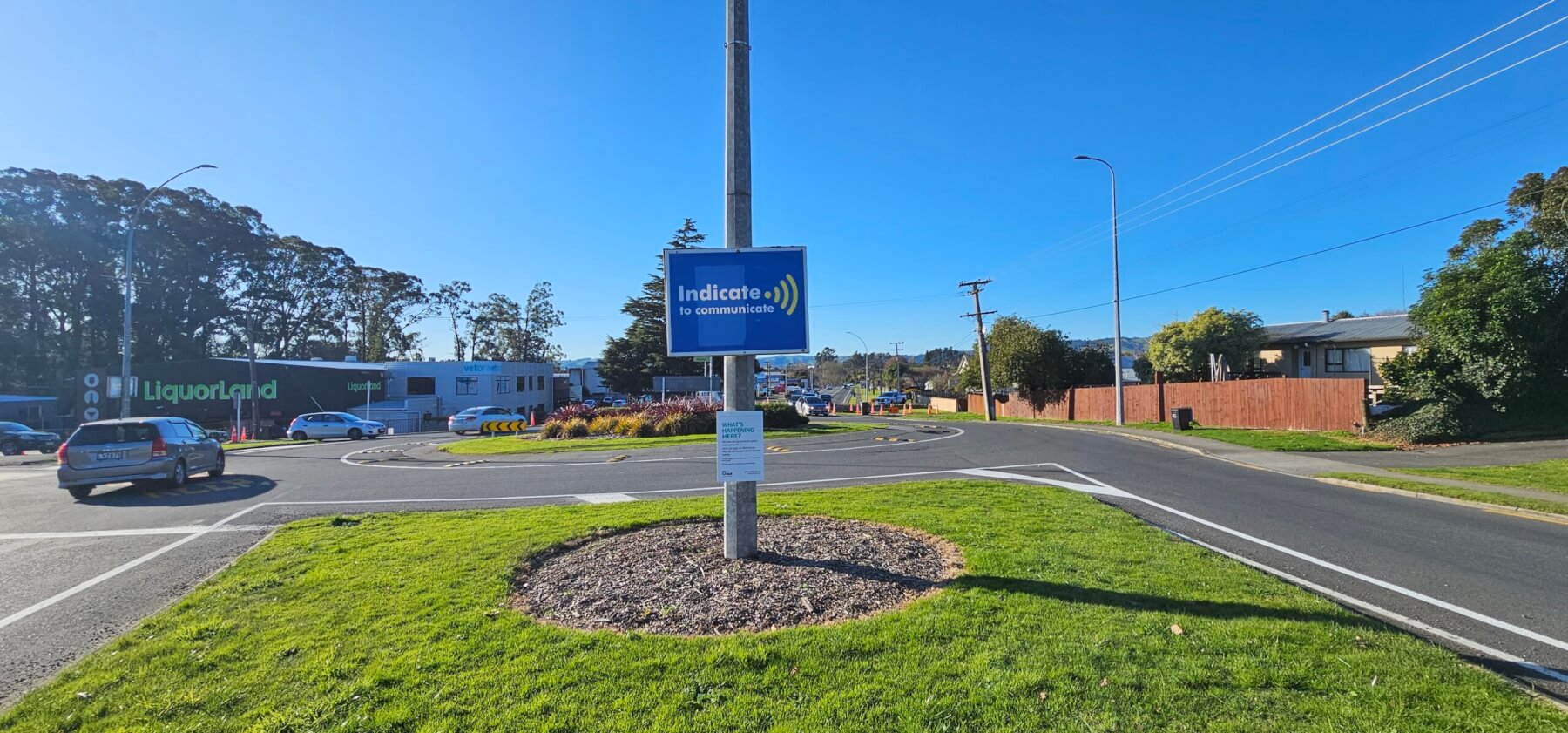
Shakespeare-Cook Sts Roundabout. Photo: Mary Anne Gill
A new pedestrian crossing in *Shakespeare Street, metres from the Leamington roundabout, has been built in response to community concerns it was unsafe to cross the connector street.
More than 11,000 vehicles use it each day and eight per cent of them are trucks, tankers and trailers heading to and from Waikato Expressway.
Waipā engineers designed a solution using yellow and black rubber mats to widen the central island of the Shakespeare-Cook streets’ roundabout, encouraging drivers navigating it to slow down.
An average 18,000 vehicles use the roundabout every day – 7000 continue up Shakespeare Street and come from or turn onto Cook Street.
The work cost $270,000 and Waka Kotahi New Zealand Transport Agency paid just over half.
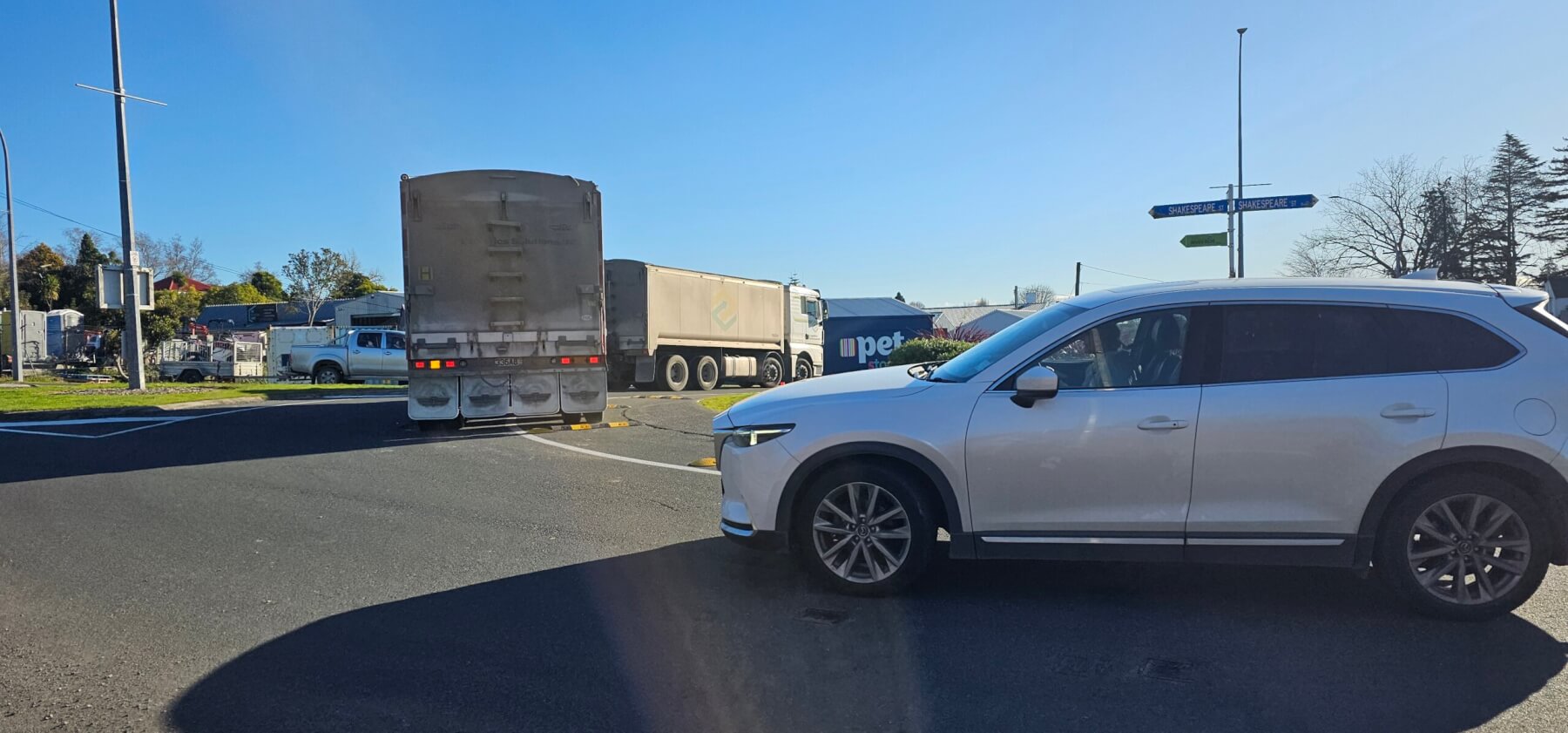
This truck and trailer unit goes slowly over the mats as it heads towards Cook Street on the new roundabout. Photo: Mary Anne Gill.
Regular users of the roundabout have contacted The News to complain. One said he was an industrial engineer with global experience and had never seen anything like it anywhere in the world.

Bryan Hudson
Waipā Transport manager Bryan Hudson said councils had been putting down rubber cushions and mats on roads and footpaths for years as traffic solutions.
“The impetus here was the community wanted the (pedestrian) crossing done and we can’t wait for a big intersection. We wanted to do something quick, affordable and efficient.
“We had to think ‘do we really do an expensive job and make that apron a little bigger’ which would have meant digging it up and pouring more concrete? It would have been a major issue to do that and much more expensive, two or three times the cost. Or do what we’ve done.”
The council also considered the possibility the roundabout could be replaced after the Cambridge Connections traffic review.
“This is a great way of making the improvement without spending too much money and if we need to tweak it, we can.”
Most truck and trailer units would travel through the roundabout without touching the pads.

Part of a pad has broken off because the bolts are too short. Photo: Mary Anne Gill.
“For some it will be a learning experience,” he said, and drivers would have to be more careful with their alignment when they enter the roundabout.
“The beauty of these bumps is they are just screwed down so if we decide from monitoring, that we need to make some changes, we can easily do that.
“The key thing is that people are slow on their approach to the pedestrian crossing point. A lot more kids will be able to navigate to school on bikes, walking or on scooters.”

Jo Davies-Colley
Part of one of the pads came loose last week. Hudson said the bolts were too short and not biting into the tarmac and holding the pads firm. That had been fixed.
Cambridge Community Board chair Jo Davies-Colley said there had been strong and regular feedback about the need for safer crossings on Cook and Shakespeare streets which the board fed back to staff.
“While the new roundabout might take some time to get used to, we support any measure that slows cars down momentarily before the crossing.
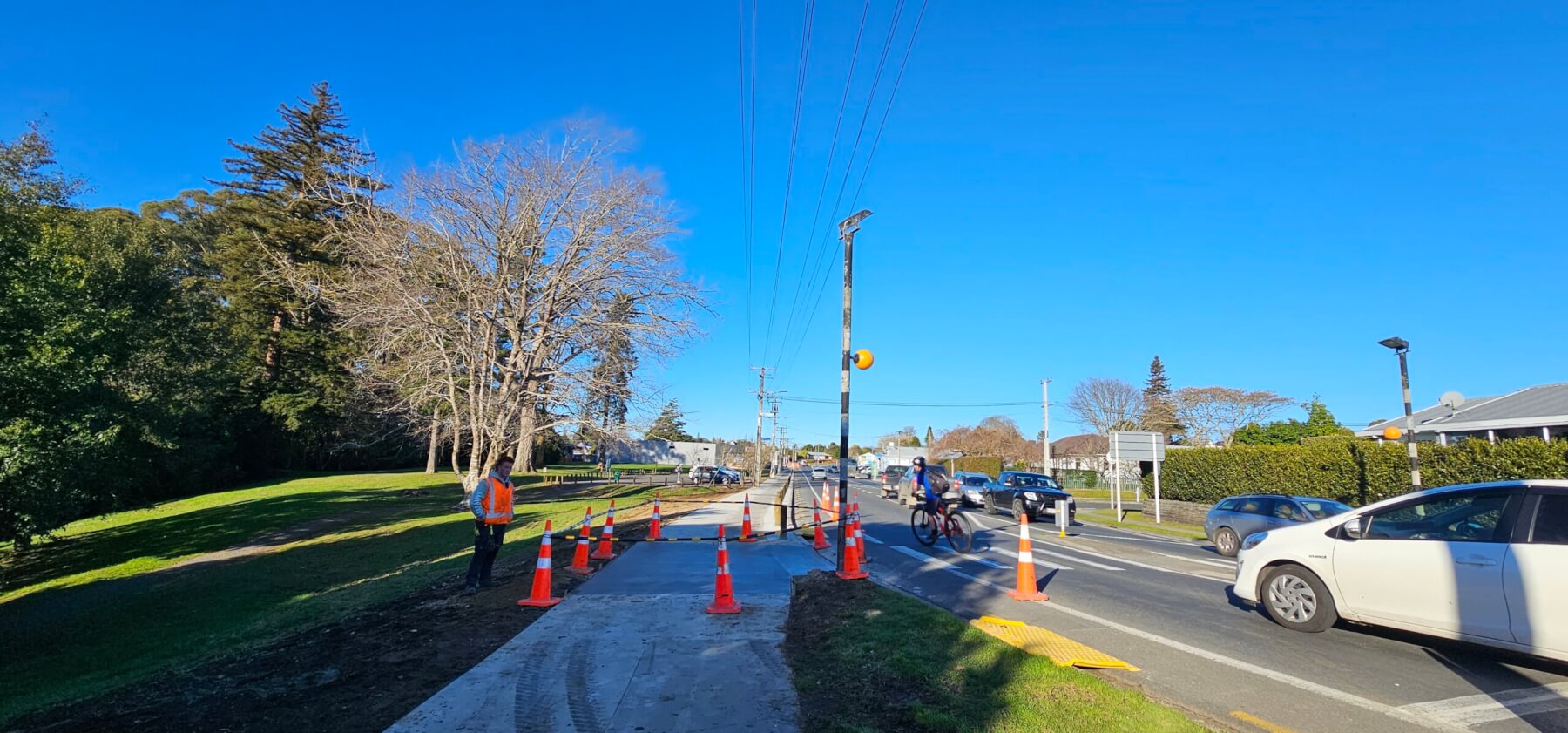
The new widened footpath on Cook Street looking towards the revamped Shakespeare Street roundabout. Photo: Mary Anne Gill.
“We have been reassured by council staff that the judder bars are a cost effective and heavy vehicle appropriate addition,” she said.
The council brought in a third party who specialises in road safety to peer review the job.
The work also saw the Cook Street footpath widened and a raised safety platform installed on Shakespeare Street.
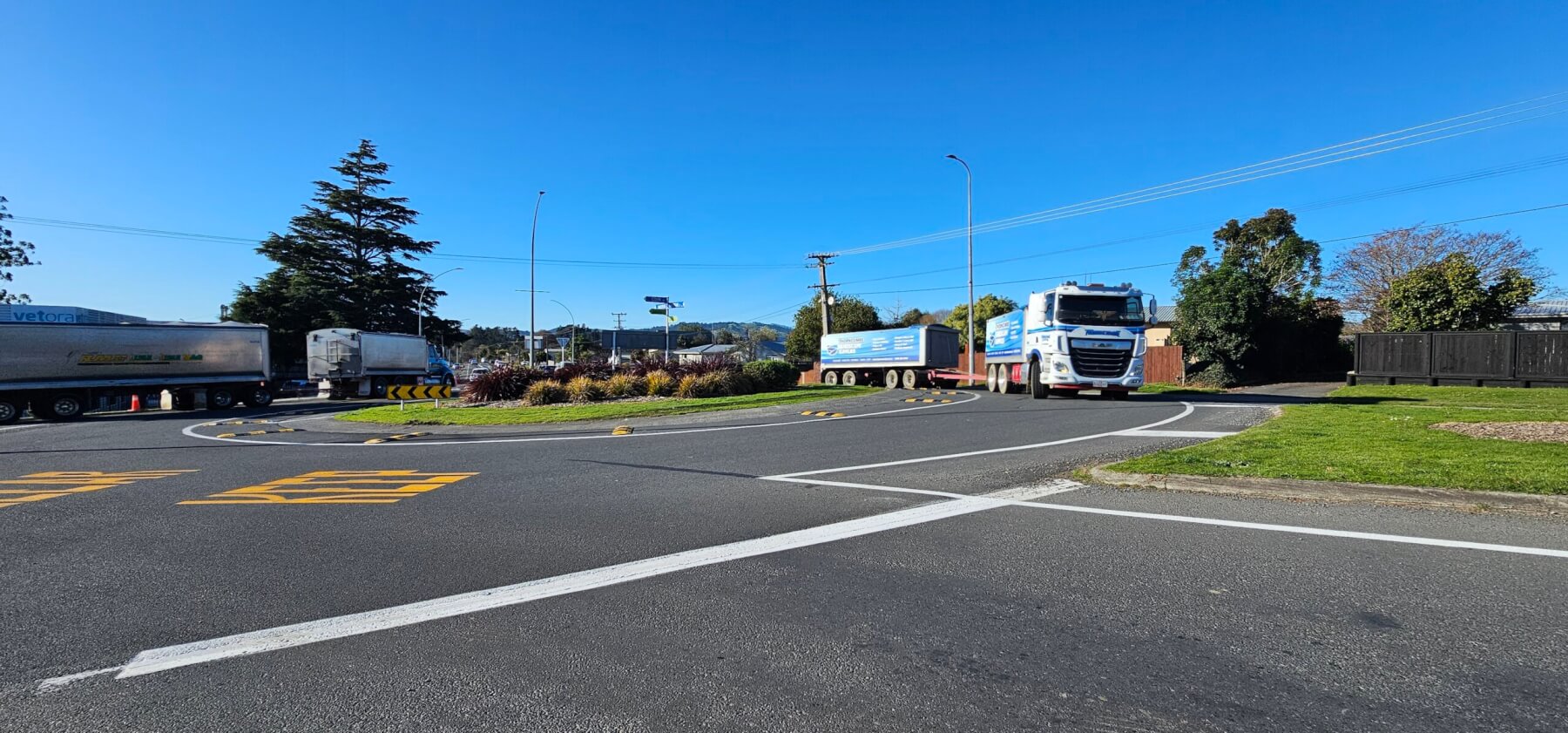
Waipā’s Bryan Hudson says truck and trailer unit drivers should take a wider berth, like this one does. Photo: Mary Anne Gill.





